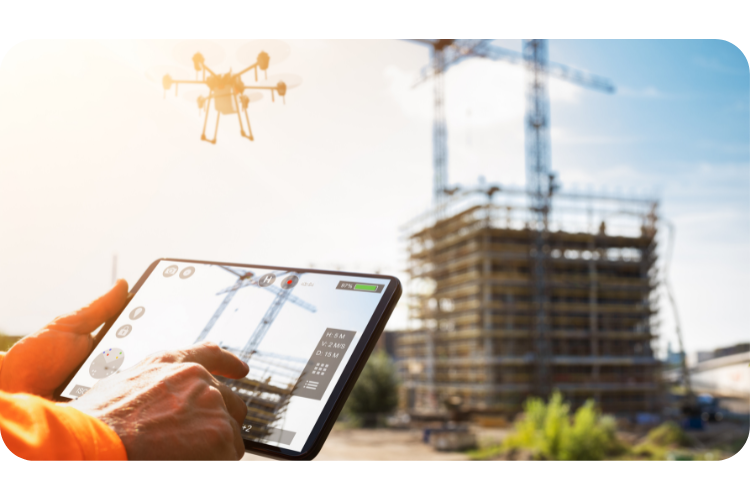Introduction
The construction industry is not known for its ability to adapt, and it is therefore difficult to appreciate how exciting it is to witness the many changes which are emerging.
A profound transformation is being driven by technological advancements, sustainability goals, and regulatory reforms.
From digitalisation and technological integration to a growing focus on sustainability, the sector is adapting to meet the demands of the modern world. In this article, we will explore the key changes shaping the construction industry and their implications for the future.
Digitalisation and Technological Integration
The construction industry has, after a “false start” with Building Information Modelling (BIM), embraced digitalisation and integrated new technologies to enhance efficiency, productivity, and collaboration.
BIM has emerged as a central tool for planning and development, revolutionising the design and construction processes. Stakeholders can now create virtual models that enable better visualisation, clash detection, and improved project coordination.
Beyond BIM, drones are modernising the industry by conducting aerial surveys and capturing high-resolution images of construction sites. Virtual Reality (VR) and Augmented Reality (AR) technologies have also gained traction, providing immersive design experiences and facilitating training programs for construction workers.
By harnessing these cutting-edge technologies, construction firms and project managers can minimise errors, streamline operations, and deliver projects more efficiently.
Sustainability and Green Building Practices
The construction sector is undergoing a significant shift towards sustainability and environmentally friendly practices.
Government regulations, such as the UK’s commitment to achieving net-zero carbon emissions, have played a pivotal role in driving this transformation. Construction is pioneering this, from the professional teams to construction companies, and are increasingly adopting sustainable practices, energy-efficient building methods, and green construction materials.
By incorporating sustainable design principles and utilising renewable energy sources, construction projects can significantly reduce their carbon footprint. The use of eco-friendly materials, such as recycled or low-emission products, further contributes to the construction industry’s positive impact on the environment.
This shift towards sustainability not only aligns with regulatory requirements but also meets the growing expectations of environmentally conscious clients and the wider public.
The changes emanating from the Grenfell Fire – (The Hackett Report)
A comprehensive review of the UK’s building regulations system identified areas in urgent need of improvement and recommended significant reforms. The industry was found to be not-fit-for-purpose.
These reforms are aimed at ensuring better clarity, transparency, and safety within the construction industry. The report also recommended that the regulation process would be improved.
Legislation, Regulatory Reforms and Safety Enhancements
Legislative changes have been proposed to address the report’s recommendations.
The Building Safety Bill of 2020, for instance, proposes the creation of a new Building Safety Regulator and the implementation of a stricter regulatory regime for high-rise residential buildings.
The Fire Safety Act of 2021 has expanded the responsibilities of fire and rescue services to enforce fire safety regulations in multi-occupied residential, health and care buildings.
Reforms to Building Regulations, including updated fire safety standards, have been implemented, with further changes expected. High-rise buildings are now required to be registered, and the use of combustible materials in external walls has been prohibited.
Additionally, a new national construction products regulator has been established to ensure the safety of materials used in construction.
BIM, Digital Twins and the “Golden Thread”
BIM has been made compulsory, through the Acts of Parliament.
It has also been enhanced calling for a 3D model or digital twin. Finally, it includes the Golden Thread, which means a comprehensive set of measures and information that should be included in building design, construction, and maintenance to ensure fire safety. It’s important to note that the specifics may vary based on the jurisdiction and the regulations in place. Here are some key elements that may be included:
- BIM technology can play a crucial role in establishing the Golden Thread by providing a digital representation of the building and its components.
- Comprehensive and accurate documentation of the building design. This includes architectural plans, fire safety strategies, structural details, and any modifications made during construction.
- A fire safety strategy and equipment. This encompasses measures such as fire-resistant materials, compartmentation, escape routes, fire detection and alarm systems, sprinklers, and emergency lighting.
- Responsible persons and duties. This includes the identity of the individuals or organisations responsible for the building’s fire safety, including the building owner, manager, fire safety officers, and designated competent persons. Their roles and responsibilities should be clearly outlined, ensuring accountability for fire safety.
- Inspections, testing, and maintenance. The Golden Thread should establish a rigorous regime for regular inspections, testing, and maintenance of safety systems, equipment, and structural elements. This includes documentation of maintenance schedules, reports, and any remedial actions taken.
- Occupant information and training. The Golden Thread should promote effective communication and training for building occupants. This ensures they are aware of fire safety procedures, evacuation plans, and how to use fire safety equipment appropriately.
Further information
Digitalisation and technological integration have revolutionised the way projects are planned, designed, and executed. The industry’s commitment to sustainability and green building practices aligns with environmental goals and societal expectations.
Furthermore, regulatory reforms aimed at improving safety standards and enhancing transparency are reshaping the construction landscape. By embracing these changes, construction firms can not only meet regulatory requirements but also gain a competitive edge in a rapidly evolving industry.
As the construction industry continues to evolve, stakeholders must stay agile, embrace innovation, and prioritise sustainability. By embracing change, the construction sector can build a future that is efficient, safe and environmentally responsible.
For more information on how different industries and construction sectors are changing take a look at some of our guides:
